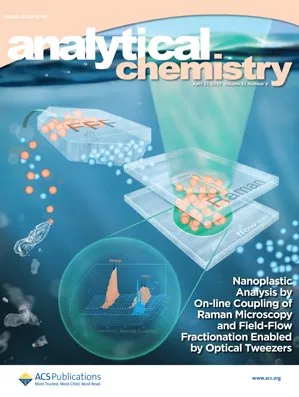Tracking of (Sub)Microplastics of Different Identity – Innovative Analytical Tools for the Toxicological and Process-Technical Evaluation / SubµTrack
Objectives
- Design and Evaluation of detection methods for plastic particles <1 µm
- Development of a separation protocol for plastic particles of different size, form and density based on field flow fractionation
- Detection of subµ plastic in real samples
Methods of Approach
- Raman Microspectroscopy (RM)
- Scanning electron Microscopy (SEM)
- Asymmetric Flow-Field Flow Fractionation (AF4)
Description
Microplastics (MP) contamination, i.e. plastic particles of a size between 1 µm and 1 mm, can be found ubiquitously in the aquatic environment and a variety of consumer products. Particles smaller than 1 µm may have different properties than MP due to their large surface to volume ratio. Since they are able to permeate cells and the blood brain barrier, subµ- and nanoplastics are also expected to have a higher toxicological potential.
Larger MP is able to travel long distances, e.g. in the marine environment, and therefore acts as a vector for persistent organic pollutants (POPs) or pathogens. The interaction of subµ- and nanoplastics with the environment or pollutants has to be studied yet. It can be expected to resemble the interaction of engineered nanoparticles in the environment, which is dominated by aggregation.
The project SubµTrack is dedicated to elucidate the behavior of subµ- and nanoplastics in the liminic environment, foremost by developing sampling methods and evaluating methods for their separation, identification and quantification.
For the identification of microplastics, Raman-Microspectroscopy is one of the most viable methods, because of its ability to identify the polymer type by their fingerprint spectra, the lack of interference with water in the sample and its size resolution to at least 1 µm and below. In this project RM, supported by SEM, will be evaluated for its use in the detection of subµ plastic particles. The resolution of RM is dependent on the applied laser wavelength and the specifications of the microscope and has its theoretical limit in the subµ range. Figure 1 shows a SEM image of two 500 nm polystyrene particles, an optical image from the microscope (including the PS Raman spectrum) and a corresponding 2D Raman map of a group of such particles.
Furthermore, n this project we realize the hyphenation of particle separation/ characterization (field-flow fractionation (FFF), UV, and multiangle light scattering) with subsequent chemical identification by online Raman microspectroscopy (Figure 2). The problem of low Raman scattering was overcome by trapping particles with 2D optical tweezers. This setup enabled RM to identify particles of different materials (polymers and inorganic) in the size range from 100 nm to 5 μm, with concentrations in the order of 1 mg/L (109 particles L−1). The hyphenation was realized for asymmetric flow FFF and centrifugal FFF, which separate particles on the basis of different properties. This technique shows potential for application in nanoplastic analysis, as well as many other fields of nanomaterial characterization.
For the separation of the particles, asymmetric flow field flow fractionation and centrifugal field flow fractionation will be employed, a technique, which is widely used in the analysis of engineered nanoparticles. Its feasibility to separate plastic particles of different sizes, form and polymer type from an environmental matrix will be studied. Further an offline and online coupling to RM will be developed, which will combine the separation and the inline quantification with laser scattering methods, such as multi angle light scattering (MALS), of established setups with the chemical information that Raman spectroscopy provides.
The scope of the project also contains studies concerning the behavior of subµ- and nanoplastics in the environment with sorption studies and the assessment of the impact of subµ- and nanoplastics on the aquatic environment and human health. For a complete evaluation, the project will also study entry paths and process-technical aspects, as well as political, social and legal dimensions concerning MP and subµplastics.
For more information on SubµTrack project please see SubµTrack_BMBF and www.wasser.tum.de/submuetrack

Figure 1
Pubilcations
C. Schwaferts, P. Schwaferts, E. von der Esch, M. Elsner, N. P. Ivleva, Which particles to select, and if yes, how many? Subsampling methods for Raman microspectroscopic analysis of very small microplastic., Analytical & Bioanalytical Chemistry 2021, doi.org/10.1007/s00216-021-03326-3
E. von der Esch, M. Lanzinger, A. J. Kohles, C. Schwaferts, J. Weisser, T. Hofmann, K. Glas, M. Elsner & N. P. Ivleva, Simple Generation of Suspensible Secondary Microplastic Reference Particles via Ultrasound Treatment. Frontiers in Chemistry, section Analytical Chemistry 2020, doi:10.3389/fchem.2020.00169
C. Schwaferts, V. Sogne, R. Welz, F. Meier, T. Klein, R. Niessner, M. Elsner & N. P. Ivleva, Nanoplastic Analysis by On-line Coupling of Raman Microscopy and Field-Flow Fractionation Enabled by Optical Tweezers. Analytical Chemistry 2020 92(8) 5813-5820, doi.org/10.1021/acs.analchem.9b05336; Front Cover
C. Schwaferts, R. Niessner, M. Elsner & N. P. Ivleva, Methods for the Analysis of Submicrometer- and Nanoplastic Particles in the Environment. Trends in Analytical Chemistry 2019 doi.org/10.1016/j.trac.2018.12.014
